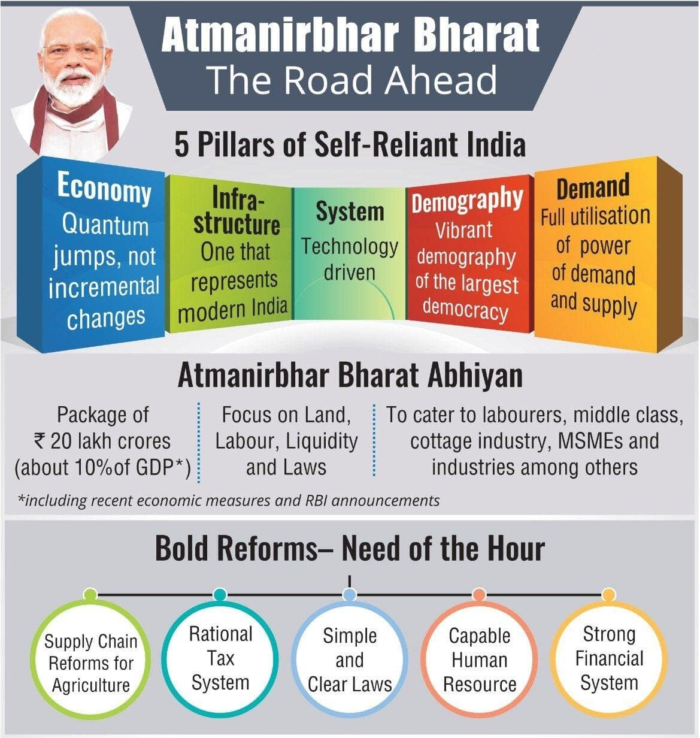Rajya Sabha TV programs and discussions are very insightful and informative from a UPSC perspective. In this article, we provide a gist of the RSTV Big Picture debate on economic reforms in India. This topic is important for the economy section under the UPSC syllabus.

Economic Reforms – Journey & Road Ahead:- Download PDF Here
Anchor: – Vishal Dahiya
Guests:–
- A.K. Bhattacharya, Editorial Director, Business Standard
- Abhinav Prakash, Assistant Professor of Economics, University of Delhi
Context:
India has completed 30 years of the liberalization regime. Multi-pronged reforms agenda was launched in 1991. It redefined the role of the State as a facilitator & neutral regulator. Over the years India has become one of the fastest-growing economies in the 21st century and the reforms agenda continues to be in focus to revive economic growth.
Background:
Liberalization is the process or means of the elimination of control of the state over economic activities. It provides greater autonomy to the business enterprises in decision-making and eliminates government interference.
Need for liberalization:
- Poor performance of the public sector
- Balance of payment crisis
- Mounting government debt
- A decline in import cover
- The sluggish growth rate of the 1980s (Hindu rate of growth)
- Long term structural weaknesses like license raj, MRTP Act, 1969, inward-looking trade policies, import substitution, etc.
India received financial help of $7 billion from the World Bank and the IMF on an agreement to announce its New Economic Policy.
Short term impact of the reforms:
- Inflation reduced from a peak of 17% in August 1991 to about 8.5% within 2.5 years
- Forex reserves increased from $1.2 billion in June 1991 to over $15 billion in 1994
- GDP growth increased from 1.1% in 1991-92 to 4% in 1992-93
- The fiscal deficit reduced from 8.4% in 1990-91 to 5.7% in 1992-93
- Exports more than doubled from 1990-91 to 1993-94
Significant changes since 1991:
- Fiscal stabilization: Abolition of export subsidies, FRBM Act, budget support to loss-making public-sector units, banning the use of ad-hoc treasury bills.
- Relaxation of foreign investment norms to attract FDI
- Tax rate reforms like VAT, GST, reduction of corporate taxes, rationalization of tax slabs, etc.
- Financial sector reforms – Autonomy to PSBs, giving teeth to SEBI, allowing the use of global depository receipts, etc.
- Reforms in the exchange rate policies – full current account convertibility was introduced in India.
- Although the growth rate has increased, the fruits of development haven’t been equitably distributed because of a sharp rise in inequality.
Economic situation during the pandemic
- Unemployment: India’s unemployment rate sharply rose to 7.11% in 2020.
- India’s debt to GDP ratio increased from 74% to 90% during the COVID-19 pandemic.
- India’s Gross Domestic Product (GDP) contracted 7.3% in 2020-21, as per provisional National Income estimates released by the National Statistical Office.
Steps taken for Economic revival:
- Atmanirbhar Bharat Abhiyaan
- PM Garib Kalyan Yojana
- PLI schemes for multiple manufacturing sectors
- Credit guarantee schemes for MSME, NBFCs
- A Rs.20 lakh crore revival package. Breakup in the figure below.


Way Forward:
- In the face of new challenges, we require fresh solutions.
- Reforms need to be taken up in areas where the public is directly impacted like local government finances, agricultural bills, etc.
- The government needs to cater to data security challenges and the digital economy by bringing a personal data act and bringing amendments to the Information Technology Act.
- We still require administrative reforms like prison reforms, personnel reforms (the USA has 5 times more administrators than India).
- Reforms should be Pro Market rather than Pro Business.
- India needs to improve on its health infrastructure and consequently human capital to translate the potentiality of the demographic dividend into sustained economic growth.
Conclusion:
After facing a setback of more than a year, India needs to take holistic and rational steps to overcome the pandemic tide and start walking on its path to a $5 trillion economy.
Read all the RSTV articles in the link.
| Related Links | |||
| UPSC Mains Exam | Government Exams | ||
| Malegam Committee |
Economic Mains Questions for UPSC GS-3 |
||
| Food Security of India |
Unemployment In India |
||
Comments